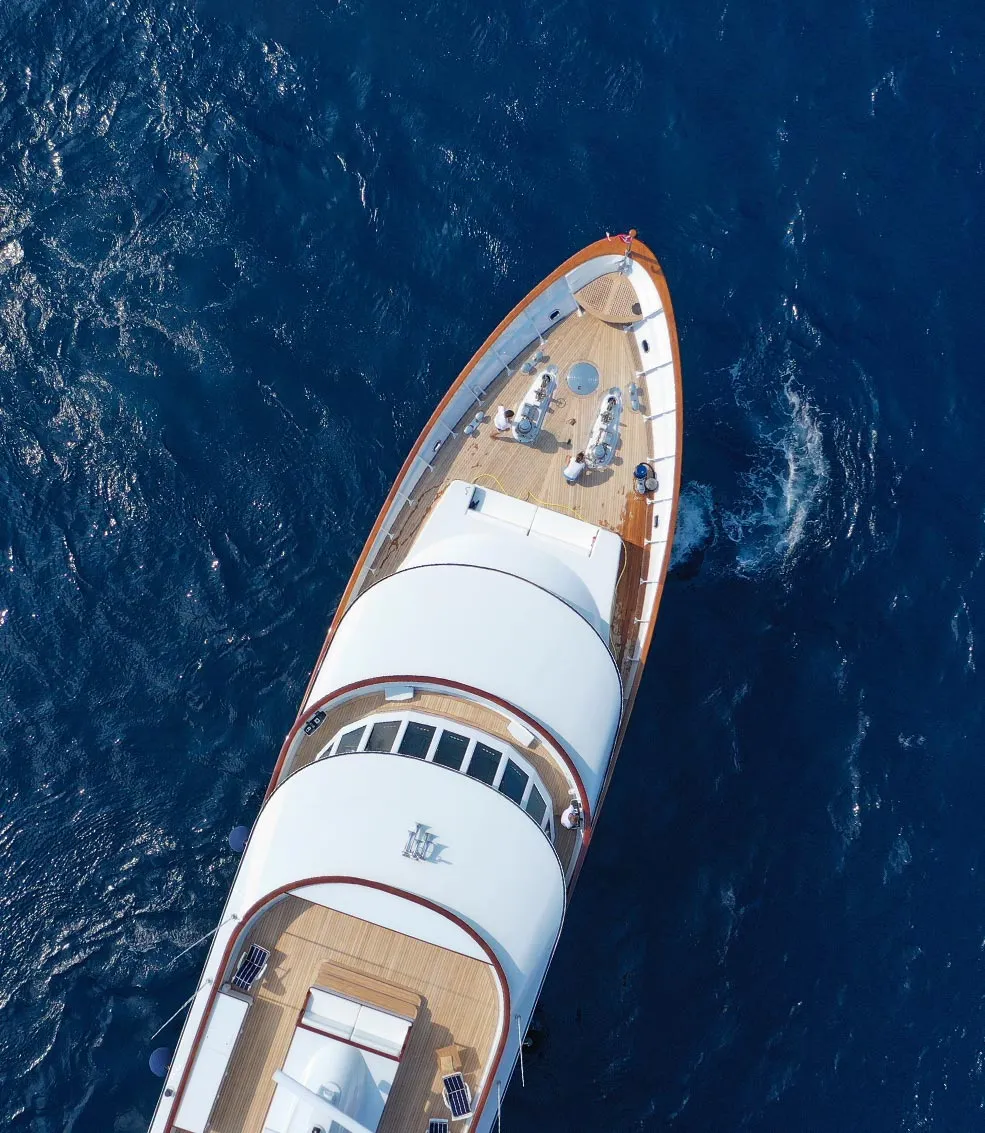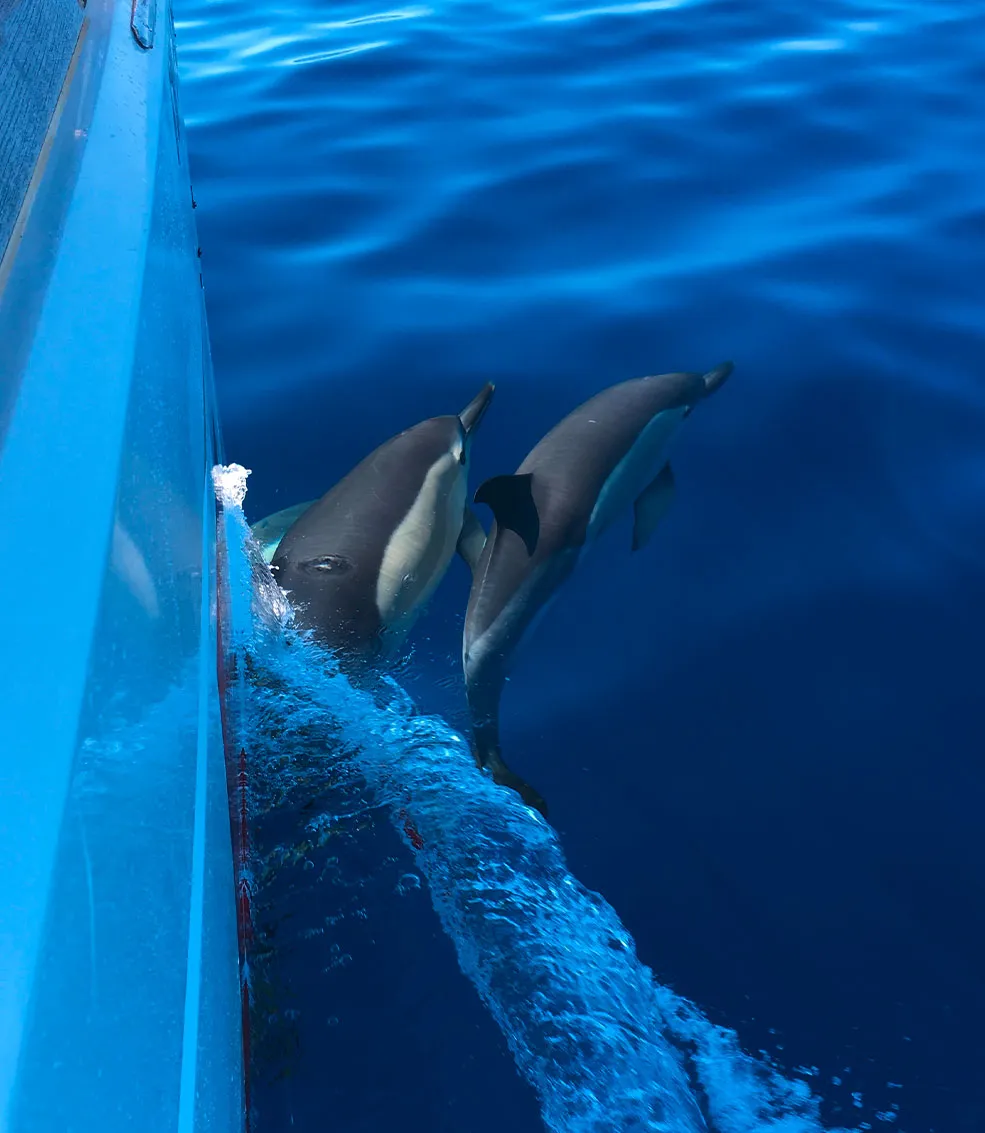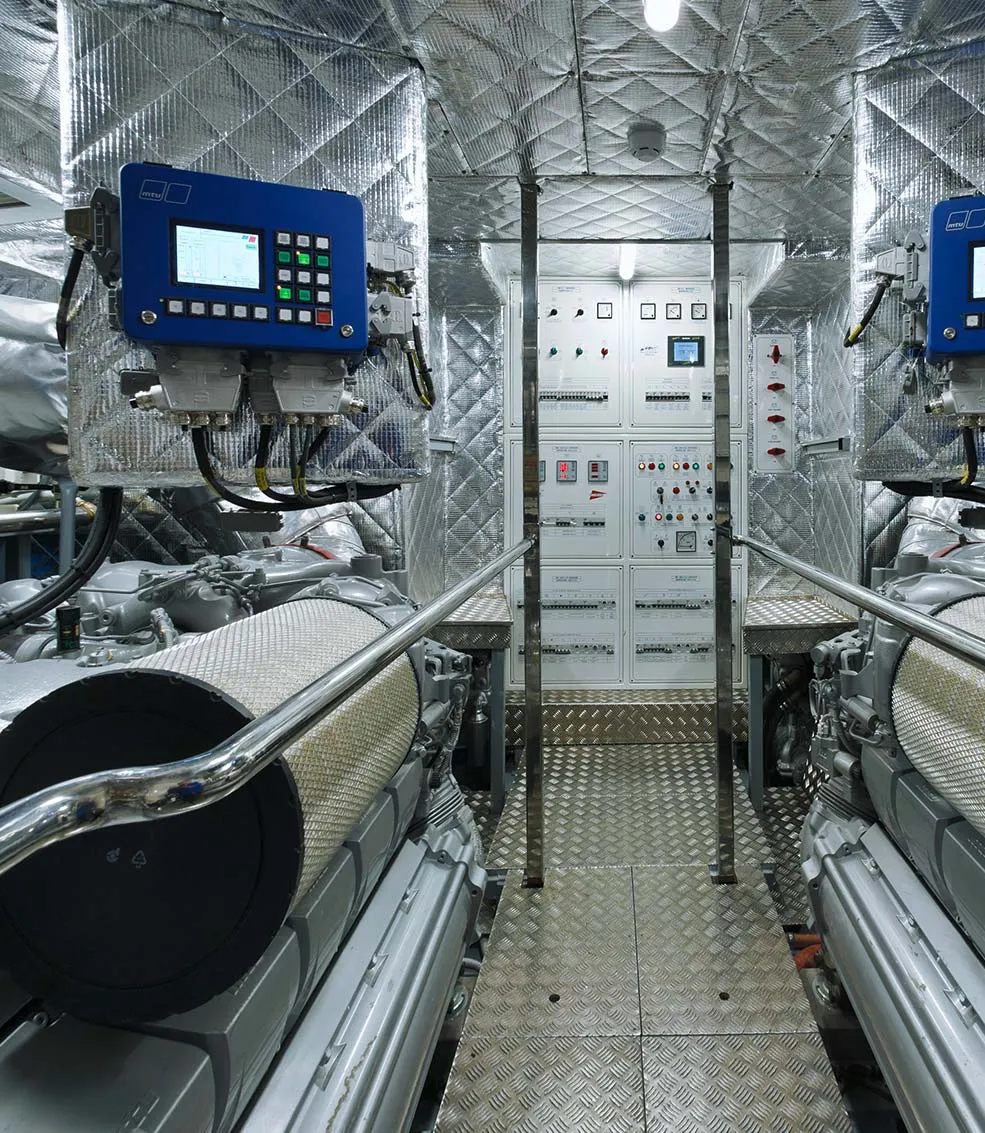Supporting environmentally friendly yachting
The yacht industry is becoming increasingly aware of how important it is to leave a minimal footprint behind leisure travels. As more eco-friendly technologies become available, owners can make more sustainable decisions without compromising on performance and costs.
Environmental concerns are bringing change to the superyacht segment. Stricter local regulations and public scrutiny are calling for a more sustainable yachting industry in a bid to reduce the segment’s impact on the oceans.

Opportunities for greener yachting
Similar to the requirements imposed on cruise ships operating in Canadian waters or across the Norwegian World Heritage Fjords, increasing access restrictions to beautiful areas and pristine waters are being considered for yacht owners, unless they can prove that their vessels have a reduced environmental footprint.
As a result, more owners are becoming more environmentally aware and eager to explore new solutions to increase the sustainability of their yachts, while ensuring the highest levels of comfort, reliability and safety. The interest in more efficient and future-proof newbuilds is therefore increasing; owners understand that a green design will not only lower emission levels but also reduce their operating costs in most cases while achieving a more attractive resale value.
However, with numerous fuel alternatives, novel energy-efficient technologies and new machinery solutions now available, owners have many options to improve the sustainability of their yachts and plenty of decisions to make. That can be challenging.

Explore fuel and technology alternatives
DNV GL’s cooperation with yards and designers has demonstrated that there is potential to harvest significant environmental and operational benefits by exploring alternative design options and technologies. Owners are starting to appreciate that it is crucial to make fundamental decisions as early as possible in the concept development or pre-contract phase to avoid unnecessary risks, schedule delays and cost increases, explains Adam Larsson, Business Development Leader, Advisory Norway, DNV GL - Maritime.

Alternative fuels to cut emissions
Switching to a low-carbon fuel such as LNG, biofuels, ammonia or hydrogen can have a big impact on the yacht’s environmental footprint. By selecting the best fuel strategy and options, owners can increase the sustainability of their yacht operations.
DNV GL is currently engaged in several projects supporting owners with a fuel strategy and feasibility assessment, including technical and financial aspects, supply and bunkering infrastructure, on-board implementation barriers and risk assessments, according to Larsson.
What is more, DNV GL has initiated its maritime hydrogen safety (MARHYSAFE) joint development project in this field. In phase 1 of the project, DNV GL and an international group of public and private industry partners are cooperating to develop an initial version of a handbook which aims to improve the design and operations of hydrogen-fuelled vessels. This is a first important step which will help the industry to deal with current regulatory and knowledge gaps whilst establishing a common basis for future rules and regulations.

Implementation of energy-efficient technologies
Energy-efficient technologies may include systems for waste heat recovery and thermal storage, wind propulsion, hull appendages, air lubrication, battery hybrid solutions, a shaft generator, fuel cells, solar energy, etc. However, each yacht has different requirements, so screening the available options and selecting and prioritizing the most relevant technologies based on the circumstances of each specific project is key.
“An overall assessment of the technology-readiness level can save costs and affect the design as well as potential risks during the implementation and operation phases. Expert knowledge of existing and new energy-saving technologies allows us to independently provide valuable insights and recommendations,” says Olaf Doerk, Head of Maritime Advisory West Europe at DNV GL - Maritime.
“We are working with yacht owners and designers who are pushing the boundaries, supporting them with proven methods to facilitate and perform technology qualifications as well as alternative design and safety risk assessments.”

Propulsion and machinery systems for increased sustainability and on-board comfort
New technologies have enabled yachts to increase their comfort significantly over the past years. For instance, they can now operate quietly for a pleasant on-board experience whilst also reducing the impact of emissions and noise pollution on the marine environment. A battery hybrid system, especially in combination with fuel cells and solar panels, can make a big difference and enable silent operation for short periods of time.
“Selecting the right propulsion and machinery configuration can have a large impact on on-board comfort, noise levels, emissions, fuel consumption, investment costs, maintenance and reliability,” says Martin Richter, Ship Type Expert Yachts at DNV GL - Maritime. “DNV GL is involved in several projects that help owners and shipyards quantify, compare and optimize the performance and life cycle cost of various set-ups, such as engines, fuels and technologies.”

Proven efficiency gains through hull line optimization
Hydrodynamic hull lines and propulsion optimization measures have proven beneficial in several yacht projects, including sailing yachts, as demonstrated by some America’s Cup designs where DNV GL provided optimization, manoeuvring and performance prediction services.
“We have seen fuel consumption improvements ranging from a few to more than 15 per cent for specific operating conditions. In order to achieve the highest average economic and environmental savings it is essential to perform the optimization based on a well-defined operating profile including the most frequent speeds,” says Richter.
“Yacht optimization should consider multiple criteria far beyond speed versus power performance in calm water, while including guest comfort, seakeeping performance as well as stability.”
Unique hull shape modelling algorithms and advanced computational fluid dynamics (CFD) simulations enable the preparation and testing of numerous conventional and unconventional design options in a very cost-efficient manner.

Above and underwater noise reduction
The ecological impact of noise pollution – both above and below the water – is rapidly gaining attention from industry bodies, governments and local authorities around the world. As a result, external and underwater noise is now being considered as a design issue for yachts operating in environmentally sensitive regions. These emissions can be reduced through careful consideration of the design and installation of machinery systems (e.g. batteries), propulsors and structural elements.
To address these marine-noise-related issues, DNV GL issued the world’s first underwater noise notation (DNV GL SILENT notation) in 2010. “Fulfilling the notation requirements provides conscious yacht owners with an opportunity to prove that they have a yacht with a low noise signature, which may allow entry or gain permission to particularly environmentally sensitive or vulnerable areas. Recently DNV GL also launched the QUIET notation, which focuses on external or airborne noise levels,” says Doerk.
The REV Ocean, classed by DNV GL, for example, is hoping to take advantage of both these notations, as she will be able to get prime spots in commercial ports and possibly discounted rates for ship operation as well.
These solutions are only some of the options available to owners to reduce the footprint of their vessels. The yachting industry is certainly building an awareness of its image and, as global and local regulations continue to tighten, we can expect to see the sector’s environmental impact to further shrink over the coming years as a result of the growing efforts to make the industry more sustainable.
Contact us
- ©aerial-drone - stock.adobe.com
- Anna Turchaninova – Shutterstock.com
- Angelo Giampiccolo – Shutterstock.com
- DNV GL
- Espen Gjelsten/Fuglefjellet – REV Ocean
View image copyright information
